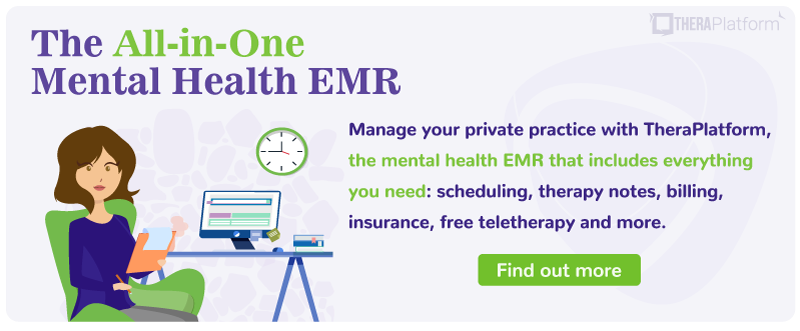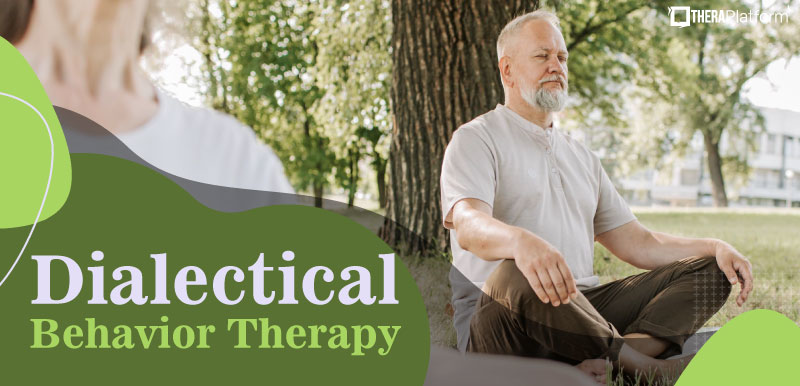Behavioral Health Types Of Therapy
Accelerated Resolution Therapy

Accelerated Resolution Therapy (Accelerated Resolution Therapy ) was developed in 2008 by LMFT Laney Rosenzweig. She had extensive experience in Eye Movement Desensitization and Reprocessing (EMDR) but found something lacking in its effectiveness. She desired to take the best of EMDR and combine it with parts of other therapies to create a very brief and direct treatment for trauma and other stress-related disorders. Let’s take a closer look.
What is Accelerated Resolution Therapy?
Accelerated Resolution Therapy combines elements of EMDR with cognitive-behavioral and brief psychodynamic techniques. It posits that imagery associated with stress and trauma is stored in the brain and is responsible for negative symptoms. The goal is to change how stress-inducing images are viewed. Therefore, the job of the therapist is to help shift a client’s negative associations to more positive memories.
There are two major components to Accelerated Resolution Therapy:
- Smooth Pursuit Eye Movements
Similar to EMDR, Accelerated Resolution Therapy relies on guided eye movements to help clients tolerate painful imagery associated with stress and trauma. How eye movements work is somewhat mysterious but it is thought they serve to buffer the experience of being exposed to negative memories and may elicit a relaxation response.
- Voluntary Image Replacement or Image Rescripting
Think of image replacement as a reframing of a negative memory. The goal is to change the negative image to something more reassuring and palatable; it does not replace it or act like it doesn’t exist. For example, a client may be suffering from trauma related to spousal abuse. After asking the client to visualize the abusive situation, the therapist would then explore with the client ways to make the memories of the abuse less unpleasant. They may, for instance, rescript the memory by introducing an image of the client standing up to their spouse, therefore empowering the client and making them less fearful.
Some other important aspects of Accelerated Resolution Therapy :
Accelerated Resolution Therapy is a brief directive therapy. The therapist is in control of the process and will lead the client through the necessary components.
While the therapist is in control of the process, the client is in control of the content. They can choose to share as much, or as little, about the traumatic memories as they feel comfortable.
Significant improvement is expected in five sessions or less. Sessions will likely last at least 60 minutes but a therapist may choose to lengthen the session if necessary.
Steps to expect in an Accelerated Resolution Therapy session
1. Exposure
The client is asked to identify and start to visualize the negative situation. The therapist begins guided eye movements to help with relaxation and coping with initial unpleasant reactions.
2. Desensitization
As the client is asked to replay the traumatic event in its entirety (a visual and/or verbal narration of the event), emotional and physiological responses to the visualization are targeted for reduction. Eye movements continue but additional relaxation exercises may be implemented to help with further desensitization.
3. Voluntary Image Replacement
As mentioned above, the therapist helps the client to reframe traumatic imagery.
4. Conclusion
Once memories have been rescripted, any residual negative reactions are addressed. The client’s progress is noted and gains are reinforced.
What problems does Accelerated Resolution Therapy treat?
Accelerated Resolution Therapy was developed primarily to treat trauma. Not surprisingly, the majority of research has focused on its effectiveness with PTSD. But, as with many therapies, its use has expanded to additional disorders. Theoretically, it can treat any problem that involves the need to reframe negative thoughts and images, which opens it up to most disorders. Initial studies have shown it as an effective treatment for anxiety and depression, among others.
When treating difficult problems, such as trauma, therapists sometimes develop symptoms, including mood swings and exhaustion. This is known as compassion fatigue. Although it has yet to be studied extensively, it makes sense that Accelerated Resolution Therapy might also be able to help therapists struggling with this problem.
Advantages and disadvantages of Accelerated Resolution Therapy
It is brief. Positive results in five sessions or less are remarkable.
For therapists, it is easier and quicker to learn than most therapies. In three days, you can be a competent provider.
It does not require clients to give details of the trauma. Clients do not even need to verbalize anything about the situation if they do not want to. Therefore, it is a more comfortable experience and preferable for reticent clients.
Accelerated Resolution Therapy is ideal as a complementary therapy. It can also serve as a stand-alone treatment but it will not interfere with pharmacological or other talk therapies. In fact, Accelerated Resolution Therapy may make deeper processing of traumatic memories possible by making them less threatening to the client. While Accelerated Resolution Therapy will reduce symptomatology, additional therapies might be desired to flesh out deeper underlying issues.

Accelerated Resolution Therapy is a relatively new type of therapy. Therefore, it does not have an extensive research base to support its effectiveness, especially with disorders outside of PTSD. However, it is based upon established theoretical frameworks, including exposure and EMDR. And preliminary outcomes are impressive.
Accelerated Resolution Therapy has been listed by the American Psychological Association as an approved treatment. As such, it can be billed by insurance like any other established psychotherapy. Accelerated Resolution Therapy would seem to be a dream therapy for insurance companies, due to its brevity. However, a longer session might not be covered by the traditional 60-minute therapy CPT code (90837). And insurance may be hesitant to cover more than one session in a day or multiple sessions in a week. If you choose to do sessions longer than an hour or more than once a week, you may have to explain yourself or risk not getting paid.
Accelerated Resolution Therapy may seem too good to be true. If the initial outcomes associated with Accelerated Resolution Therapy remain supported over time and with continued research, it is a breakthrough therapy. However, Accelerated Resolution Therapy research is still in its infancy, and claims as to its effectiveness are not yet widely supported.
Training and resources
Official Accelerated Resolution Therapy training is done in person and can be found through the Accelerated Resolution Therapy website. Basic course certification is three days and costs $1,500. More advanced training is also available.
A free training introduction video with the founder of Accelerated Resolution Therapy, Laney Rosenzweig.
A PBS segment on Accelerated Resolution Therapy for treating PTSD, including descriptions of the experience of veterans who completed the treatment.
This book, by Remco van der Wijnga Accelerated Resolution Therapy, is a manual for clinicians explaining how imagery rescripting can help with trauma and other issues.
Accelerated Resolution Therapy is an exciting new therapy in the fight against trauma and other problems. Although relatively unproven, it holds promise as a brief, non-threatening, and effective way to treat a variety of psychological disorders.
Start 30-day Free Trial and explore TheraPlatform. HIPAA Compliant Video and Practice Management Software for Therapists.
What’s more, Accelerated Resolution Therapy can be conducted successfully on a virtual therapy platform, such as Theraplatform. Theraplatform is a comprehensive one-stop practice management and teletherapy resource. It offers assistance with scheduling, billing, and documentation, and includes a library of different therapy apps. Want to learn more about Accelerated Resolution Therapy and other effective treatments? TheraPlatform, an all-in-one EHR, practice management and teletherapy tool was built for therapists to help them save time on admin tasks. Start a free 30-day trial of Theraplatform today.
More resources
- Art therapy
- DBT
- CBT
- Therapy resources and worksheets
- Therapy private practice courses
- Ultimate teletherapy ebook
- The Ultimate Insurance Billing Guide for Therapists
- The Ultimate Guide to Starting a Private Therapy Practice



